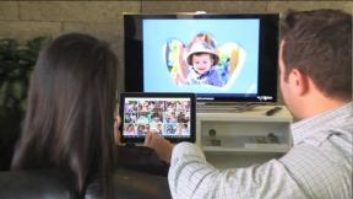In putting the finishing touches this week on TWICE’s 25th anniversary issue, which debuts next Monday, it has taken this reporter and my colleagues back in time.
The funniest thing has been editors coming into my office to debate a story or two that we covered several years ago to see how we were going to present it in this special issue.
I’ve caught myself looking back over the years, even as far to remember what the first CE product I ever owned was: an early 1950s black and white “tabletop” (it had to be 50 pounds) RCA Victor TV. I inherited it from my great uncle in the 1960s after he passed away. And I learned how to repair it – by taking off the cardboard back of the set, checking which vacuum tube didn’t light up, and going to the drug store to the RCA TV bulb stand where you could test your build or just pick up a new one.
I also remember in those formative years what my mother – and probably everyone else’s mother and father in the country – told their 8- to 13-year-olds: “Don’t get too close to the TV! You’ll ruin your eyesight!”
Maybe that’s why I wear glasses today, but who knows?
Can you image what those same parents would say if they found out that many of their children would make a living by staring at what looks like a Jetsons’ TV monitor and controlling what is on the screen?
When you think of it for a Baby Boomer like me what was so amazing about the early Pong video game, and later video games, and the first VCRs was that you, a consumer in your own home, could control what was on the TV screen. Or in the case of a VCR and knew how to set the clock, do some early time shifting with T-120 or T-180 blank video tape.
And I haven’t even mentioned yet the first Apple and IBM home computers where the beginnings of the virtual world of the Internet began.
Have you ever tried to explain to someone of a certain age that you couldn’t control, store or replay what you could see on an old TV? Or that desktop computers were cumbersome affairs that were used at work and that few, if anyone, had them in their homes even by the late 1970s? And that the Internet didn’t exist?
I haven’t, but probably one or two youngsters might ask – seriously – if I had indoor plumbing when I grew up.
Getting back to personal computers, the category has floated in and out of my career for years.
I first began to cover “industrial” electronics – for want of a better term – at the old Electronic News back in 1978, which was published by Fairchild Publications. The paper covered components, business, industrial and defense electronics, as well as a section named “Consumer Electronics.”
I was stuck on a components section and wanted to know why Electronic News’ CE section was only one page and didn’t cover TV, turntables, audio and the like. I had not heard of Consumer Electronics magazine, Video Review, Audio Times and all the rest.
A senior editor mumbled something like “our readers are corporate purchasing agents” and presumably not interested in CE.
But I was. Even after I left their to join another industrial electronics paper at CMP and later on covered the first handheld electronic toys, video games, PCs from Coleco, Commodore, Atari and IBM. Especially when I went to my first CES in 1982 I wanted to cover audio/video.
Well I got my chance in the mid-1980s at HFD’s Consumer Electronics section with Jeff Malester and Manning Greenberg. When the section was going to expand I was asked if I wanted to edit the new Home Office section in the late 1980s to cover PCs, word processors, fax machines and cordless phones.
I passed on that and got to cover not only “big screen” (32-inch tube) TVs, the first camcorders that you held on your shoulder, Walkman, mini-audio systems, the blank tape business (learned more about mass marketing covering that category than getting an MBA), and the arcane world of retailing, specifically electronics/appliance retailing.
At the same time HFD moved from manual typewriters, to electric ones and finally computers making the newsgathering process a lot more efficient.
Also at that point someone over there must have liked my work at Fairchild because I was named the section editor of HFD’s Consumer Electronics section and held the job until I got a call from a headhunter near New Year’s Eve of 1992 saying that TWICE was looking for an editor and would I like to interview for the job.
I immediately called founding editor in chief Bob Gerson and he said yeah, management at Cahners Publishing (which became Reed Business Information) wanted someone to work with him and the TWICE staff as editor. I interviewed, got the job in ‘93 and the rest, as they say, is history.
It’s been a hell of a ride, for many of us who have been around a while and for the industry itself over the past quarter-century. Hopefully when you take a look at our 25th Anniversary issue on Monday, Aug. 8, you can appreciate where the industry has been, and where it is likely to go in the near future.











